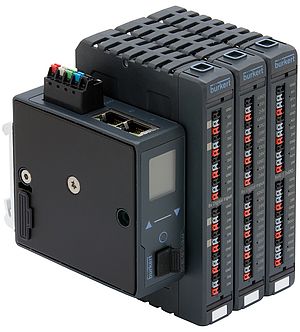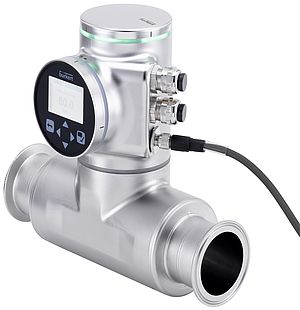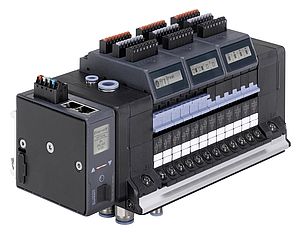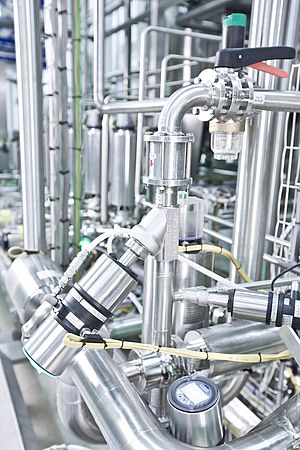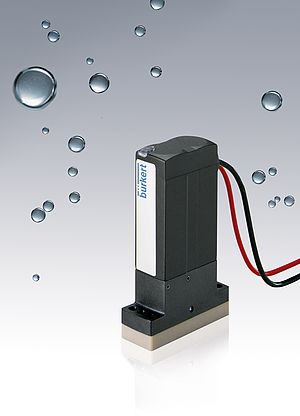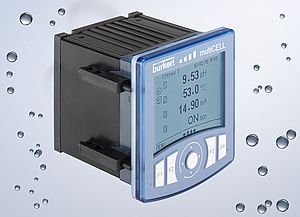Every day, new types of machines and equipment are being designed and developed that push forward the boundaries of medical science. In this continuing offensive, specialist MicroFluidic products for medical, biomedical and analytical applications are playing a key role, delivering, through automation and miniaturisation, greater efficiency in existing processes (faster sequences, higher throughput, smaller sample and solvent volumes and lower costs), and enabling newer processes in areas such as genetic research, chromatography and pharmaceuticals.
Significant amounts of research and development have been undertaken over the last few years, with the objective of achieving improvements across a wide range of processes: e.g. in doping analysis, tracing in food or meat, or in bio-chip analysing. As a result, systems, especially those in pharmaceutical and medical applications, biotechnology or biochemistry, reveal a high level of automation. This enables higher throughput, reduces costs and eliminates the errors that occur in manual operations.
Miniaturised fluidic components have become essential in this automation evolution; and are now a prerequisite in a wide range of new processes. Initially confined to micro- pumps and valves, MicroFluidic components now include new miniaturised sensors for pressure, temperature and flow control, all of which are vital to cope successfully with the challenges of low volume liquid handling. This ability is particularly important in IVD and pharmaceuticals, where increasingly expensive reagents and samples are used. These may be small in quantity, but not in price; their cost sometimes extending to several hundred pounds for a few millilitres.
Moreover, the solvents and reagents now in use are stronger and more aggressive, and are used in higher concentrations compared to the standard of just a few years ago. As a result, highly resistant materials such as PTFE, PEEK and FFKM, as wetted parts, are required to ensure that isolation of the media is not negated by such chemical attacks. All of the above considerations, and the fact that it is essential to design miniaturised fluidic components that allow easy adaptation and/or integration into different applications, mean that it is vitally important to include the MicroFluidic supplier at the development stage of any new equipment processes. From the customer's point of view, highly integrated systems are not only easier to assemble. Their individual combination in specific manifolds with optimised fluid channel design, valve components, sensors and control electronics offers a high level of functionality. This starts with simple, functionally- integrated manifolds and leads on to highly sophisticated and customer-defined control systems.
System solutions do not only offer economic advantages in terms of TCO (total cost of ownership); they also provide a functional guarantee from a single supplier, and technical benefits such as the reduction of internal volumes and fluidic interfaces (hence, the risk of contamination is reduced) and an optimised interaction between functional units like sensors, pumps, valves and controllers. Moreover the integrative approach and material know-how of a system supplier also eases dealing with technical challenges such as the use of aggressive solvents such as Pyridine, THF, Dichloromethane and Acetonitrile.
MicroFluidic components that make up the customised systems approach are characterised by their size (width per station 4.5mm) and their performance, with dosing rates down to a few nanolitres. As a result, they meet the demanding requirements of (cost-conscious) miniaturisation. In addition, they also provide two other essential operating qualities: reliable, continuous operation and modular flexibility. For continuous, reliable operation, MicroFluidic components offer key benefits, such as freedom from wear and tear, short response times, low power consumption, and an operating life of up to 108 valve cycles.
As regards modular flexibility; this recognises that devices constructed using MicroFluidic components must perform greatly differing tasks with frequently similar sub-functions: e.g. dosing or mixing, in their overall function. Accordingly, the logical requirements in the design of MicroFluidic components are: a variety of body types, interchangability of components, modular systems with standard centre spacings and the facility for application-specific additional developments.






